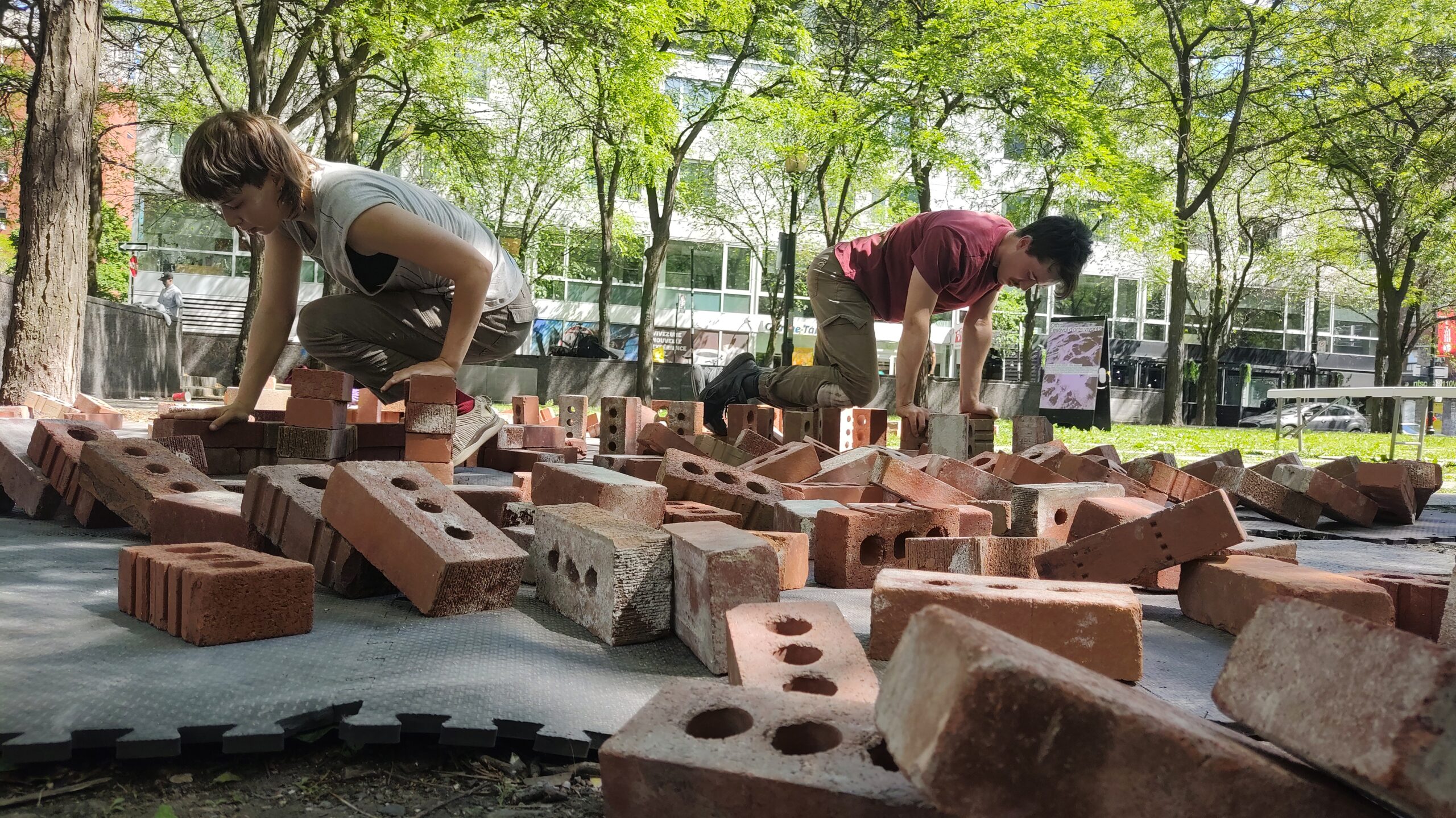are they dancing into ruins or into what is yet to come? and other notes on “S’imbriquer”
amilton de azevedo writes about S’imbriquer, created by Philippe Dépelteau (Canada), presented in the 2024 OFFTA Live Art Festival (Tiohtià:ké/Montreal). this text is part of a special coverage; the critic traveled to Canada at the invitation of the Festival TransAmériques (FTA).
“(…) TWO: Well, it’s done. / But this is a brick. / Your heart is a brick. ONE: Yes. / But it beats only for you.” (Heiner Müller, Heartpiece)
- These fragmented notes are about the experience of witnessing a fragment of a performance. S’imbriquer is four hours long; I’ve watched it for one and a half hours.
- Does all materiality call for a meaning? Stories need to be told?
- When I arrive at Place de la Paix, the two performers are about to domino-topple a hundred bricks. Not only a beautiful image, but also a nice, brief, ephemeral symphony. And they tip down the ones that stood up. S’imbriquer; to imbricate yourself. Not only both performers but the audience makes a movement towards it. The world being built (and destroyed, and rebuilt) by S’imbrique is the world we carry within us.
- To brick. Otherness, oneness and the urge of existing collectively. Build walls, build homes, build worlds: one brick can be a mountain, an edifice, a house, a bed, a city, an Other. A brick can build, a brick can kill. Beauty and violence.
- (S’imbriquer, on its own, doesn’t seem to incite violence through its compositions and attitudes. Nevertheless, the eye of a viewer can project it. Everywhere, actually.)
- Bricks collected throughout the city. Their small or big difference on shaping can make an entire structure fall. Their small or big difference on shaping can make every structure unique.
- The presentation text near the living installation mentions that the idea is to look at them as one looks at clouds. As a kid, I remember not only watching but inputting similarities between their shapes regarding other existing animals or things. How to just look and feel without comparing or rationalizing?
- How to contemplate without creating narratives? (Should we?)
- The durational perspective and its kind of inherent impossibility to apprehend the entirety of the performance as one gigantic monolithic whole can be seen as an attempt to make one let themself go, dwelling into what is there and maybe can’t even be named.
- Are they dancing into ruins or into what is yet to come?
- The handling of the bricks is constantly carrying a discourse-building attitude within it. Compositions, expressions, time. As the concept presents itself, intention meets effectiveness and perhaps the meaning that matters is the meaning that organized the creative desire into being.
- To find comfort in roughness. Fulfill a brick with tenderness; be fulfilled by the tenderness of a brick. To be kind in toughness. Face the raw materiality and compose through difference without separability.
- Frame, contour, be framed, be contourned.
- Whilst one brick is being slided on a bench, a skater is grinding in the park. Materialities, actions, life.
- Just before I had to leave, the domino-toppling scheme was organized again. Is it cyclic? Do they follow prompts, performative programs, choreographies? (Does it matter?)
- There is a designed space for the action. What does it mean to go out, beyond it? Worlds meet, worlds collide? Or is it all the same – as one brick glides through air and passes close to the audience, a person is also stacking some bricks nearby, all the structures are in motion.
- So much has been built over ruins. Brick by brick. So much that is built that should become ruins. Brick by brick.
- Read more: access this link for more theater critics written in english
- Read more: follow ruína acesa’s FTA special coverage

